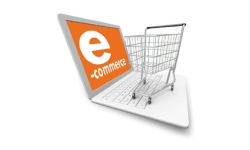If you’re new to E-commerce and you’re neither a techie nor a seasoned entrepreneur, you can still build a successful online business. All you have to do is learn the basics before you create an eCommerce website. While engaging in eCommerce can be leaps and bounds cheaper than running an actual shop with walk-in customers, it’s more challenging because you can’t entertain your store visitors face to face. Your website does the talking for you. So apart from having quality goods and services, you should also have a convincing and attractive eCommerce website.
Why do I need my own eCommerce website if I’d like to sell online?
There are many ways to sell online. You can set up a seller account in an online marketplace or consign your items to an existing online store. While these avenues are a great start to test the waters, you’ll need to branch out eventually. Having your own online store means you can design and run it exactly the way you want it. You won’t be limited by the rules of a marketplace, and you’ll earn more because all profit goes to your business. Customers will also find it easier to locate you when you have your own website. It’s a way to establish your business identity in cyberspace.
What basic terms should I know before creating an eCommerce website?
Here’s a quick list of some online selling lingo you should be familiar with before you create an eCommerce website:
1. B2B:
Business-to-business, which means selling products and services to other enterprises.
2. B2C:
Business-to-consumer, which means selling products and services to the end user or the customer.
3. Domain name:
The characters that form the main part of a URL and identify web pages.
4. Navigation:
The process of moving from one page to another within a website.
5. Payment gateway:
This is an application or service in E-commerce that allows businesses to accept credit card payments over the Internet.
6. Shopping cart:
The shopping cart is an important feature of any eCommerce website. Like an actual shopping cart where in-store customers load the items they want to buy, it’s where online shoppers “load” or add the items they want to “Checkout” or purchase. This is where they will see the total item price based on quantity, shipping price, total cost and payment details.
7. Traffic:
The number of people visiting, and how many times they visited your online store.
What do I need to consider before I create an eCommerce website?
Shopping at your website should not be rocket science. Keep it clean and organized. Your contact details (e.g., email address, phone number, physical address if applicable, and social media accounts) should be visible so that customers can reach you anytime. Of course, you should be ready to answer their queries within your specified time frame (e.g., a response within 24 hours). Provide as much information as you can about your merchandise, payment options, shipping and returns policy, and other important concerns. Create an eCommerce website that makes online retail therapeutic and not confusing.
RELATED: THE DO’S AND DON’TS IN ONLINE SELLING
Also, think about your online marketing strategy. Don’t bombard all your customers with spam or unsolicited email. Leave a space where interested visitors can subscribe to weekly product updates or a monthly newsletter. Always include a call to action in your promotional emails. Your goal is not only to increase site traffic but also to increase sales.







